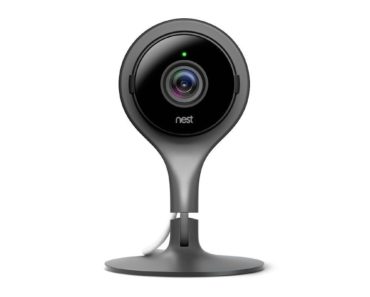With the holidays over, you may be looking down at the bulging evidence of too much merriment around your waistline. If you’ve resolved to lose weight in 2010, you might be considering signing up for a commercial diet plan, such as Weight Watchers, Nutrisystem, or Jenny Craig.
The TV ads, filled with celebrity endorsers and regular people holding out their enormous “old jeans” make the diet plans sound terribly tempting. Although a new FTC rule now requires testimonial ads to cite typical results, the looming question still remains: Which of these diet programs are worth your money?
To find out, MoneyWatch analyzed eight of the biggest diet plans. Three are support-only plans that don’t require you to buy their food, and five are food-delivery plans. We interviewed leading nutritionists and weight-loss professionals, pored through clinical studies, and tallied up membership fees and food costs to determine the ones most likely to help you slim down and to see how much you’d pay to drop 20 pounds.
Our favorite for value and efficacy is Weight Watchers, designed to help you change your eating habits for good. Nutrisystem is the least expensive meal delivery plan we reviewed (Medifast is cheaper, but you have to provide one meal a day on your own). And the silver-spoon award undoubtedly goes to In The Zone Delivery, a white-glove service for people who’ll spare no expense to drop the pounds.
Here’s how the plans stack up. See the handy chart at the bottom of the page for a side-by-side comparison.
Weight Watchers
Cost: Choose the $39.95 monthly pass, which includes unlimited meetings and online support. If you won’t go to meetings, the best online-only deal is the three-month $65 plan (with automatic monthly renewal at $16.95 thereafter).
The skinny: The oldest national weight-loss program, its members rave about the encouragement they get at weekly meetings led by former Weight Watchers dieters. Nutritionists praise the portion-control points system: Each food is assigned points based on its serving size, calories, fiber, and fat; and no foods are forbidden. Your point allowance is based on your weight, height, gender, age, and activity level. “Weight Watchers has done a good job incorporating cognitive behavioral change to weight management,” says Martin Binks, professor of psychology at Duke University Medical Center.
Does it work? Yes. A recent clinical study in the New England Journal of Medicine linked group counseling sessions to weight-loss success. That explains why Weight Watchers has impressive short-term results. A 2005 study in the Annals of Internal Medicine showed participants lost an average of about 5 percent of their body weight (10 pounds) in six months. Two years later, they had kept about half the weight off. To help members stay on track, Weight Watchers encourages them to attend meetings until they’ve stayed within 2 pounds of their goal weight for six weeks. After that, you get free lifetime membership. The company says members using its online tools in addition to attending meetings lost 50 percent more weight than those going to meetings alone.
How much can you expect to lose? 1 to 2 pounds per week
Cost to lose 20 pounds: $120 to $200 with the monthly pass, including membership and 12 to 20 meetings. Figure on about $80 more in the six-week maintenance phase.
Cost per pound of weight loss: $6 to $10, not including food
Worth the money? Yes. It’s economical and has a proven track record.eDiets
We looked at two plans from eDiets – one that offers support alone, and another with meal delivery.
Cost: For the support-only plan, about $18 per month, billed to your credit card (with a $25 fee if you cancel within three months). The optional meal delivery service, eDiets Fresh Prepared Meal Delivery, costs about $100 per week plus $20 shipping, and includes the online service.
The skinny: You can choose from among more than 20 diet plans, including ones for diabetics and vegetarians. Online tools let you set goals, plan menus and generate shopping lists. There’s no face-to-face support, but you get support through online message boards and a mentor program that connects newbies with an experienced member. Also, you can reach a registered dietitian or personal trainer by phone at any time. The optional meal delivery service offers freshly prepared, calorie-controlled meals delivered by FedEx. Daily calorie intake: 1,150 to 1,670 calories.
Does it work? “People really seem to love message boards, but there is no data yet to show whether they are effective in helping with weight loss,” says Binks. But telephone support has some evidence in its favor: “A couple of studies have shown that telephone support is just as effective as live support,” says Christine Gerbstadt, M.D., spokeswoman for the American Dietetic Association.
How much can you expect to lose? 1.5 to 2 pounds per week.
Cost to lose 20 pounds: For online membership, $54 for three months; for meal delivery, $1,556 including online membership for 13 weeks.
Cost per pound of weight loss: $2.70 for online-only plan; $78 for meal delivery
Worth the money? Online membership: Yes, it’s a bargain for round-the-clock support. Meal delivery: No: For about the same money, other services offer better track records.
Southbeachdiet.com
Cost: $65 for three months ($5 a week); minimum commitment of four weeks.
The Skinny: Southbeachdiet.com is an online version of the “good carbs/good fats” diet created by cardiologist Arthur Agatston. For the first two weeks, you eat three extremely low-carb meals a day plus mandatory snacks. After that, you gradually add “good carbs,” such as fruits and whole grains. You can customize menus, search a database of more than 1,000 recipes and get a personalized shopping list. There’s online support from staff dieticians and members plus daily motivational emails.
Does it work? Studies have shown that after one year, carb-restricted diets led to greater weight loss and increased heart health than low-fat diets. However, the advantage disappeared over the long term.
How much can you expect to lose? Figure on 8 to 13 pounds during the two- week kick-start phase, then 1 to 2 pounds a week thereafter.
Cost to lose 20 pounds: $65, plus the $15 cost of the South Beach book.
Cost per pound of weight loss: $3.25, not including food
Worth the money? Maybe: It doesn’t cost much, but you don’t get as much support as with Weight Watchers or eDiets.
In the Zone Delivery
Cost: About $40 per day plus $3 to $10 delivery fee
The skinny: The Zone diet is mostly meat, fruits, and vegetables. Home-delivered “gourmet” frozen meals have a ratio of 40 percent carbs/30 percent proteins/30 percent favorable fats, designed to promote stable insulin levels, increased energy and weight loss. You eat three meals per day plus two Zone protein-powder snacks.
Does it work? Yes. A 2007 study of 160 people in the Journal of American Medical Association found the Zone diet helped people achieve modest weight loss after one year, comparable with those on the Atkins, Weight Watchers and Ornish diets, and improved cardiac risk factors.
How much can you expect to lose? “Many customers lose 5 pounds a week, but don’t get confused: Some of this is water weight,” says Don Ruttenberg, CEO of Fresh Food Delivered, the company behind In the Zone Delivery. “What you really lose in body fat is 1 to 1.5 pounds per week.”
Cost to lose 20 pounds: $4,480 for 16 weeks of food (assuming 1.25 pounds of fat loss per week)
Cost per pound of weight loss: $224
Worth the money? No, unless you’re looking for white-glove service.
Jenny Craig
Cost: $20 for 10-week membership, plus $84 to $126 a week for Jenny Craig food. One-year premium membership is $359.
The skinny: Premium-priced Jenny Craig lets you order its heart-healthy, nutritionally balanced packaged food by phone and pick it up at a Jenny Craig center or have it delivered through Jenny Direct. You eat three Jenny Craig meals plus a snack per day, and supplement with fruit, vegetables and dairy. “The food may lack zesty flavor, but it teaches portion control through visualizing, so when you go out to eat in a restaurant you’ll know how big a piece of meat you want to eat,” says Gerbstadt. Once a week, you get a weigh-in and pep talk with a consultant – who is not a dietician and who earns commissions from selling you products. There’s also round-the-clock phone support.
Does it work? Jenny Craig has a good track record for short-term weight loss (up to one year). In a UC San Diego clinical trial of 442 dieters (funded by Jenny Craig), Jenny Craig clients lost 11 percent of their initial weight after 12 months, compared with 3 percent weight loss by those who were dieting on their own.
How much can you expect to lose? 1 to 2 pounds per week
Cost of losing 20 pounds: $1,070 to $2,120, including food, depending on rate of loss.
Cost per pound of weight loss: $54 to $106 per pound
Worth the money? Yes – it’s got reasonably priced meal delivery and in-person support.
Bistro M.D.
Cost: About $180 per week plus $25 FedEx delivery
The skinny: The “doctor-designed” Bistro M.D. program aims to provide a rotating menu of FedEx’d, portion-controlled, frozen meals that are a cut above the usual packaged diet fare. (The price is a cut above the competition, too.) The plan tries to help you avoid a weight-loss stall out by varying the daily calorie intake between 1,100 and 1,400. By eating a little more some days and a little less on others, you’ll supposedly prevent your body from becoming used to the same number of calories every day. Bistro M.D. also offers a Biggest Loser meal plan designed by the doctors and nutritionists associated with the TV show. Bistro M.D. doesn’t do much in the way of organized support, but you can speak with a registered dietitian by phone upon request.
Does it work? While no university studies support the theory that varying caloric intake aids weight loss, the high quality of the food and the relatively large portion sizes have been praised by Health magazine, Dr. Phil and The New York Times. Some plan users have complained of a lack of choices and menu flexibility compared to other plans, but a company spokesman says they offer more than 100 entrees and can make substitutions to accommodate allergies and food preferences.
How much can you expect to lose? 2 to 3 pounds per week
Cost of losing 20 pounds: About $1,440 for 8 weeks of food
Cost per pound of weight loss: $72
Worth the money? Yes. It’s a reasonable price for well-made food with slightly faster average weight loss than with Jenny Craig.
Nutrisystem
Cost: About $333 for four weeks of meals, plus $20 shipping; $148 for 14-day starter program purchased through Walmart
The skinny: This meal-delivery service, endorsed by Marie Osmond and Dan Marino, emphasizes foods with a low glycemic index. The underlying premise is that controlling blood sugar levels leads to weight loss. The heat-and-eat prepared meals and snacks contain roughly 55 percent “good” carbs, 25 percent protein, and 20 percent fats; like Jenny Craig, you add fruits, vegetables and dairy. Nutrisystem also offers the cheaper, five-day Flex plan ($235 for women, $260 for men) in which you eat food you choose for the other two days a week, and a fancier Select plan, which has frozen “restaurant-style” entrees ($411 for four weeks). Support is available through phone counseling and online chat rooms.
Does it work? There’s plenty of research showing that following a diet of 1,200 to 1,500 calories a day, such as Nutrisystem, can cause weight loss. For example, a study by the Obesity Research Center at St. Luke’s Roosevelt Hospital in New York found that postmenopausal women who followed a 1,200-calorie plan for 16 weeks lost an average of 21 pounds.
How much can you expect to lose? 2 to 3 pounds per week.
Cost of losing 20 pounds: About $706 for eight weeks of food on the standard plan.
Cost per pound of weight loss: $35
Worth the money? Yes: For a meal-delivery diet system, Nutrisystem is more economical than Jenny Craig.
Full Review of Nutrisystem Turbo 13
Medifast
Cost: About $300 per month or $80 per week
The skinny: Although today’s program is not as stringent as the original liquid fast Medifast launched decades ago, the low-fat, relatively low-carb plan is designed to bring about rapid weight loss by coaxing your body into a “fat-burning state” known as ketosis. With the Medifast 5 & 1 Plan, you eat five small, 100-calorie meal replacements a day (which you order online and have delivered) plus one “lean and green” meal you prepare, consisting of about 500 calories of lean chicken, fish or meat plus three servings of low-carb salad or green vegetables. The 70 meal replacement choices include shakes, bars, soups, pudding, oatmeal, chili, pretzel sticks, cheese puffs, and scrambled eggs.
Does it work? If you can stick with it, a diet of 1,000 calories a day can certainly induce rapid weight loss. A common concern with such low-calorie diets is that you’ll quickly regain the weight, but in a small clinical trial recently published in the journal Experimental Biology, after 10 months, only about one in five people regained all the weight they had lost.
How much can you expect to lose? 2 to 5 pounds per week
Cost of losing 20 pounds: $480, plus your own groceries for the “lean and green” meals
Cost per pound of weight loss: $24 (plus groceries)
Worth the money? Maybe: Choose this more extreme plan only if quick weight loss is your priority.





